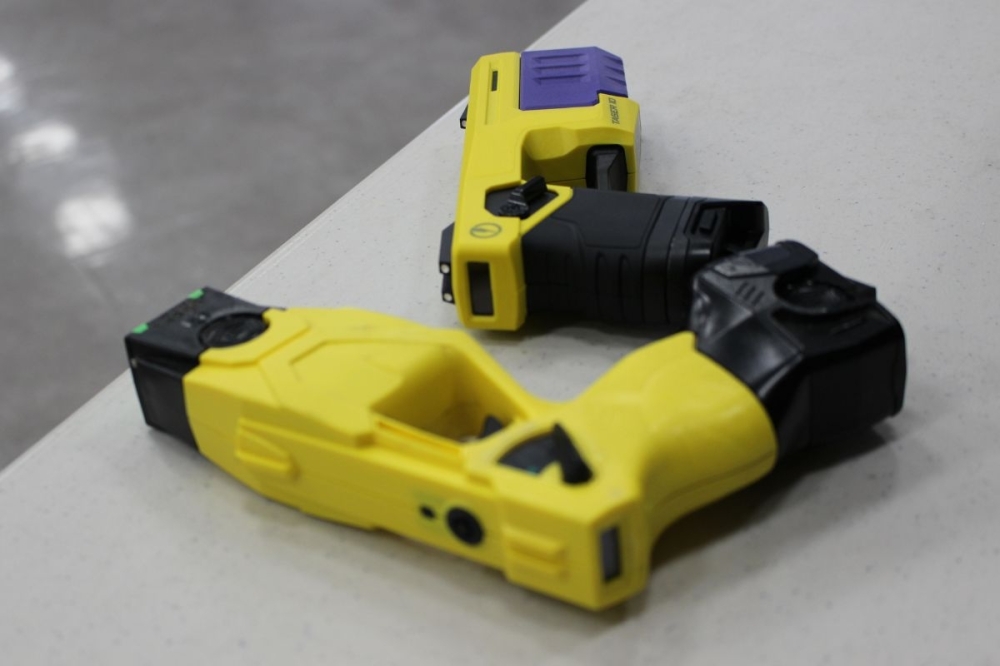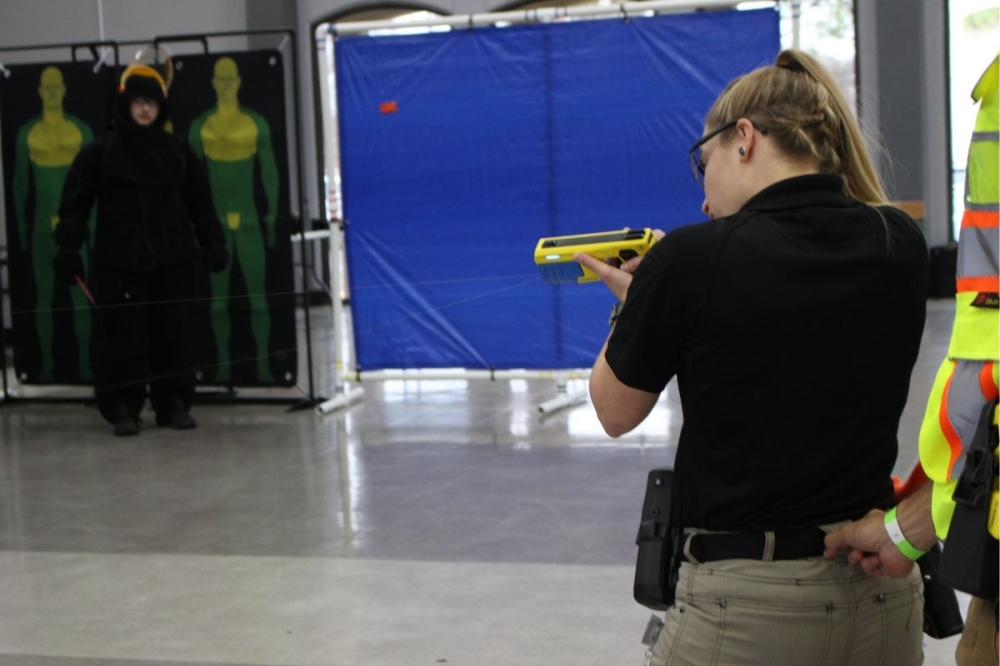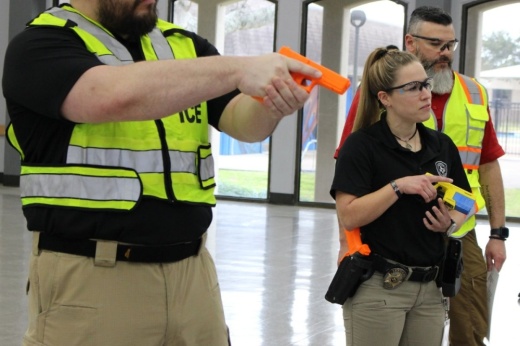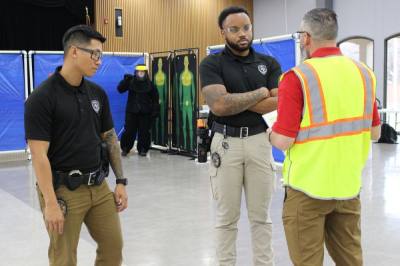Two-minute impact
From Feb. 6-8, 121 League City police officers received training on the Taser 10 from Axon, which is a technology and weapons company that develops products for military, law enforcement and civilians.
Tim McCurley, the department’s training division lieutenant, said the department’s goal is to de-escalate any scenario where harm may come to a civilian or an officer.
The new Taser 10 will replace the department’s old model, the X26P, which McCurley described as a “one-shot wonder,” as the two-probed taser had significantly less accuracy, he said.

- Audible and visual warning alerts
- Enhanced data management
- A maximum range of 45 feet; the X26P could shoot up to 20 feet away
- 10 individually targeted probes
- Advancements in accuracy, effectiveness and reliability
What else?
In 2022, Axon launched its “moonshot” goal to cut gun-related deaths between police and the public in half by 2033.
The company publishes a public safety gun fatality database in collaboration with the Institute for Intergovernmental Research, an independent, nonprofit research firm to this end.

Though the upgraded equipment is still not 100% accurate, it does give League City PD more options than they had before, McCurley said.
“The goal of having an intermediate weapon is actually to save [the suspect’s] life and the officer's life,” McCurley said. “It prevents the officer from having to use deadly force.”






